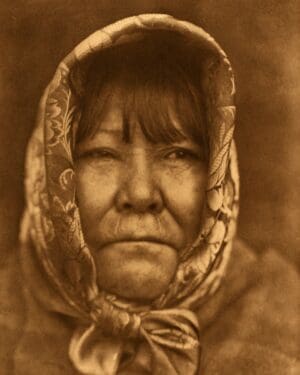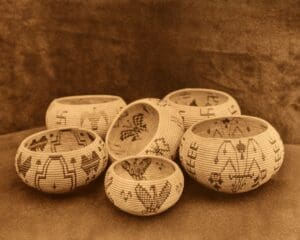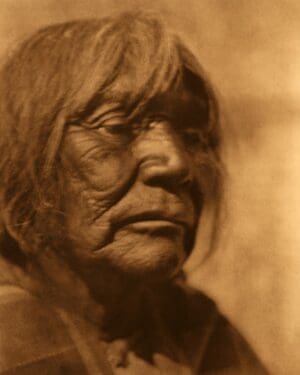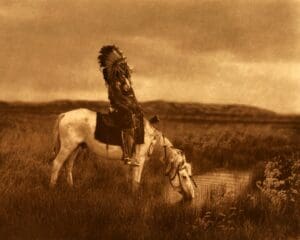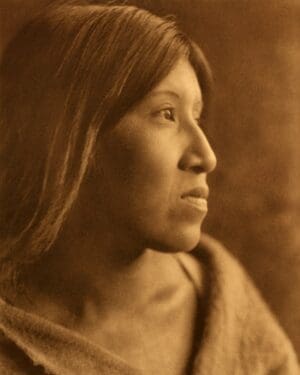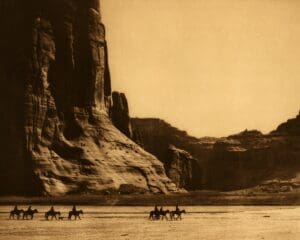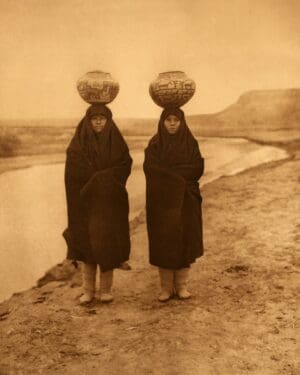Washoe Native Americans
Washoe Indian Photos by Edward S. Curtis
Tribal Summary
Dress
Both Washoe sexes wore a short kilt of deerskin, and on occasion moccasins and knee-length leggings. Women had deerskin shirts, and everyone possessed a rabbit-fur robe. The general use of moccasins, leggings, and dresses for women was probably of comparatively recent date. Tattooing is a modem practice. The hair generally hung loose, and clam-shell beads obtained from the west were favorite ornaments.
Dwelling
Washoe houses were rude wickiups of willow poles meeting at an apex, and thatching of grass, tules, or cedar-bark slabs. The shape may be described as between a hemisphere and a cone. The doorway was always eastward, in the lee of prevailing winds. Windbreaks sufficed in the summer. The sudatory had three posts set in line in a shallow, circular excavation. These supported a two-piece ridge-beam, against which were leaned the tops of willow poles. The covering was slabs of bark. Fire was built inside.
Food
Pine-nuts and sunflower-seed were the important vegetal foods. Acorns in moderate quantities were harvested on the western slopes of the Sierra Nevada and were purchased from the Miwok and the Maidu. Deer were killed by driving them past concealed hunters, or with the aid of disguises. Antelope were plentiful in the valleys, but like all their neighbors, the Washoe were dependent mainly on rabbits for both flesh and fur. Fish were plentiful in Lake Tahoe and in Truckee and Carson rivers, and were an important food.
Showing all 4 results

